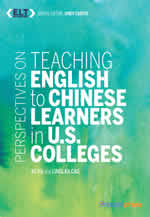Quick Tip: Giving our Mind a Break—Brain Breaks in ELT
by Laura Giacomini
Teachers and students alike cannot escape today’s stressful lifestyle. As a teacher of English as a foreign language I always try to look for activities and resources that give my students, and me, a break from the routine. I started looking for something innovative to do in my classes, and I learned about brain breaks and their purpose in education. Brain breaks help students reenergize and regain focus, especially after engaging in what might be considered a long period of academic activity in the foreign/second language. In addition, brain breaks contribute to increasing productivity and learning improvement.
Brain Break Basics
Brain breaks are short activities that involve using the body and/or the mind and, in our case, also expose language learners to meaningful and authentic target language. If we choose to do brain breaks in pairs or small groups, students are also using language to socialize. Some brain break basics:
- These breaks should not last longer than 1–5 minutes, even if students want to repeat them.
- It is important to remind students of the aim of brain breaks so they know why these activities are beneficial to their learning process.
- Use brain breaks whenever students have become restless or unproductive, or when you have two back-to-back periods with the same group.
- Before conducting a brain break, announce and explain it to your students. You can demonstrate while giving instructions.
- If the weather permits, consider taking the break outdoors.
Examples of Brain Breaks
I have used many different brain breaks, but I started with simple ones. I suggest varying brain breaks to cater to different preferences and personalities. For example, I did several “guided dancing” brain breaks but not all students are comfortable dancing in front of their peers and, thus, being on the spotlight. My piece of advice: Let them be. If they do not want to dance, do not insist. As it happened in one of my classes, shier students may eventually engage without you even telling them.
Following are two brain breaks I created.
Reach for the Stars and Shake It
- Stand up and make sure you have enough room around you.
- Breathe in and as you do lift your arms toward the sky.
- Breathe out and stretch as much as you can upward as if trying to reach out for the stars.
- Repeat three times.
- Shake your hands, then your arms, legs and feet. Allow a few seconds for each.
Just Go With the Song
- Stand up and make sure you have enough room around you.
- Play a song that you or your students like or have previously chosen.
- I did this brain break playing the song “Waves,” by Mr. Probz.
- As I played the song I modeled the movements I wanted students to make. I started with motions as if I were swimming, for example. Because the song chosen had to do with waves, all the movements we made were in connection to water sports. I allowed each movement to take a few seconds. This is a freer brain break. You can even ask a student or several to take turns guiding the rest of the class.
Here is one more brain break I like to use. this one is from Refocus and Recharge!: 50 Brain Breaks for Middle Schoolers (Center for Responsive Schools, Inc., 2016):
Mirrors
- Students stand, face a partner, and decide who will lead first and who will follow.
- The leader begins by making slow and steady motions—without speaking—while the follower mirrors the movements.
- After 15–30 seconds, ring the chime (or use some soothing sound). Students switch roles. Repeat as time allows.
Conclusion
In the beginning, I had my doubts about using brain breaks. I thought they were not going to be taken seriously by students or that I was going to waste class time originally allotted to teach the lexico-grammatical structures that were part of the yearly syllabus. I was proved wrong, fortunately, and they were both popular with and beneficial for my ELLs.
If you’re interested in brain breaks, you can find more of them by surfing the web, using Pinterest, and on—my recent favorite site—GoNoodle.
Reference
Center for Responsive Schools, Inc. (2016). Refocus and recharge!: 50 brain breaks for middle schoolers. Turner Falls, MA: Author.
Laura Giacomini is from Buenos Aires, Argentina. She is a graduate teacher from IES en Lenguas Vivas Juán Ramón Fernández. She was a Language IV teaching assistant at her alma mater and a Fulbright Scholar in the United States. She has been teaching English in the private and public sectors since 2005 in a variety of contexts, including primary and secondary school and college.
TESOL Blogs
Interested in writing a blog for TESOL?
Read the submission guidelines and send us your post!
Check out a few recent TESOL Blog posts:
|
ELTpics: A Digital Picture File for English Language Teachers, by Joe McVeigh
 In the previous blog post in this series, How to Create More Engaging Conference Presentations, I talked about how conference presentations can be made more interesting by using images that fill the entire screen to convey ideas. Of course, as teachers, we also want to use images in our own classrooms. Although the Internet is full of wonderful pictures, it can sometimes be a challenge to find just the right picture that is also free of copyright restrictions. Read more. In the previous blog post in this series, How to Create More Engaging Conference Presentations, I talked about how conference presentations can be made more interesting by using images that fill the entire screen to convey ideas. Of course, as teachers, we also want to use images in our own classrooms. Although the Internet is full of wonderful pictures, it can sometimes be a challenge to find just the right picture that is also free of copyright restrictions. Read more.
|
|
Attending TESOL 2018: Focus on Second Language Writing, by Elena Shvidko
 The 2018 TESOL Convention in Chicago is only a few weeks away, and I am happy to see a lot of helpful suggestions on conference attendance offered by my fellow TESOL bloggers. A couple of years ago, I also wrote a blog on how to make your conference attendance a helpful and unforgettable experience. Today, I’d like to address my blog specifically to those conference attendees who are interested in issues related to second language writing as well as those who would like to get involved in the professional and social life of the Second Language Writing Interest Section (SLWIS). Read more. The 2018 TESOL Convention in Chicago is only a few weeks away, and I am happy to see a lot of helpful suggestions on conference attendance offered by my fellow TESOL bloggers. A couple of years ago, I also wrote a blog on how to make your conference attendance a helpful and unforgettable experience. Today, I’d like to address my blog specifically to those conference attendees who are interested in issues related to second language writing as well as those who would like to get involved in the professional and social life of the Second Language Writing Interest Section (SLWIS). Read more.
|
|
The 5 Habits of Highly Effective TESOLers, by TESOL Ambassador
 The TESOL Annual Convention & English Language Expo is an incredible event, for teachers looking to find their ground and develop as professionals as well as for seasoned experts striving to share their knowledge and experience with others. Read more. The TESOL Annual Convention & English Language Expo is an incredible event, for teachers looking to find their ground and develop as professionals as well as for seasoned experts striving to share their knowledge and experience with others. Read more.
|
TESOL Bookstore

Featured Resources from TESOL Press
 Teaching English to Chinese Learners in U.S. Colleges
Teaching English to Chinese Learners in U.S. Colleges
Ke Xu and Liglan Cao
Gain an in-depth understanding of the Chinese learner to improve your teaching practices and help your students succeed. Take a step back from familiar contexts and examine how institutional structures, the relationship between the U.S. and a student's country of origin, and the student's motivations and attitudes all play a role in their English learning.
 TESOL Voices: Adult Education
TESOL Voices: Adult Education
Tim Stewart, Editor
Follow the triumph and trials of real-life students as they learn English, whether they're pursuing it for their vocation, as immigrants to a new country, for travel, or for their very survival.
 More Than A Native Speaker: An Introduction to Teaching English Abroad, Third Edition
More Than A Native Speaker: An Introduction to Teaching English Abroad, Third Edition
Don Snow and Maxi-Ann Campbell
In this newly updated third edition, learn step-by-step how to effectively teach English abroad. Gain valuable tips and resources for teaching in an unfamiliar educational system, working with students of varying ages and skill levels, and adapting to life in a different culture. A rich array of online resources and activities included.